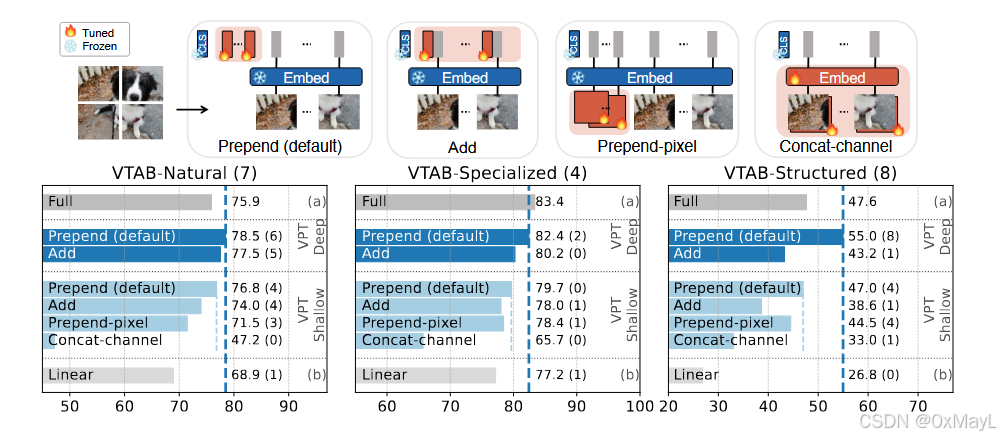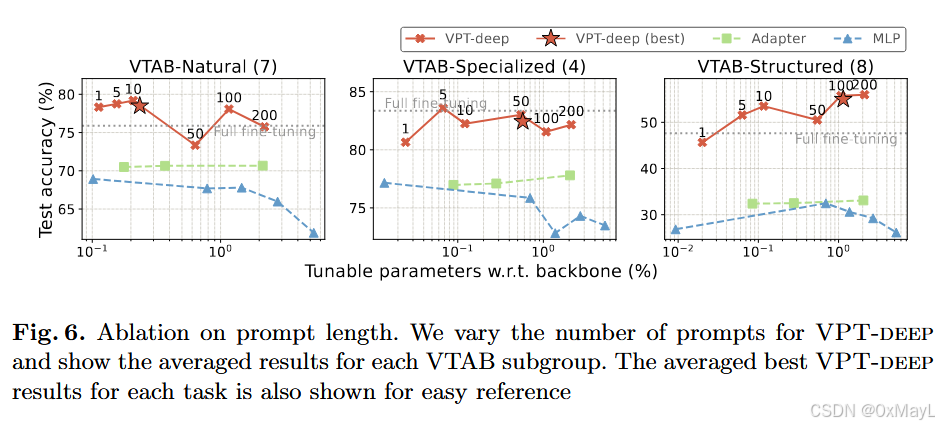VPT
- 核心思想:冻结backbone,在encoder的输入中
引入额外可学习的token,微调这些token和decoder部分,避免直接调整backbone。 - 两种方法:Deep和Shallow
只有第一层的prompt token是可以学习的参数

每一层 transformer layer的prompt token都是可以学习的参数

VPT的应用
- VIT模型
- SWIN transformer,这个有点不同,没有[cls] token。
VPT on hierarchical Transformers. We extend VPT to Swin [52], which employs MSA within local shifted windows and merges patch embeddings at deeper layers. For simplicity and without loss of generality, we implement VPT in the most straightforward manner: the prompts are attended within the local windows, but are ignored during patch merging stages. The experiments are conducted on the ImageNet-21k supervised pre-trained Swin-Base. VPT continues to outperform other parameter-efficient fine-tuning methods (b, c) for all three subgroups of VTAB Tab. 2, though in this case Full yields the highest accuracy scores overall (at a heavy cost in total parameters).
VPT的探究
prompt的位置
- 结论:就是作为独立的输入最好
- 1:直接单独作为输入的一部分,与patch embedding分开
- 2:与patch embedding进行累加
- 3:在embedding,前加入prompt
- 4:在embeddingprompt作为一个通道加入

prompt length
- 可以看到10~100这个区间 最合适。
